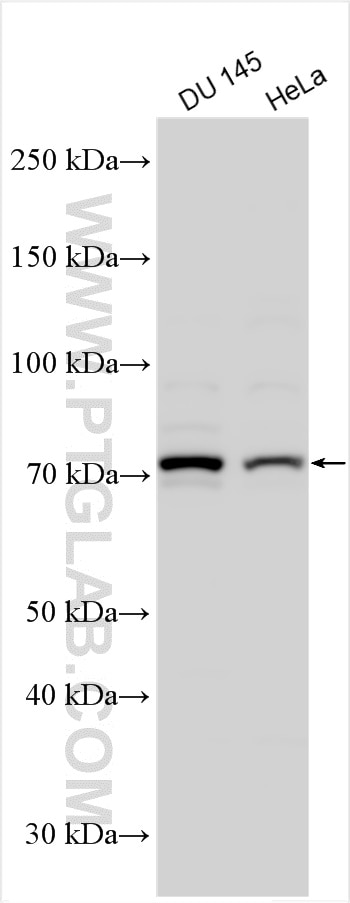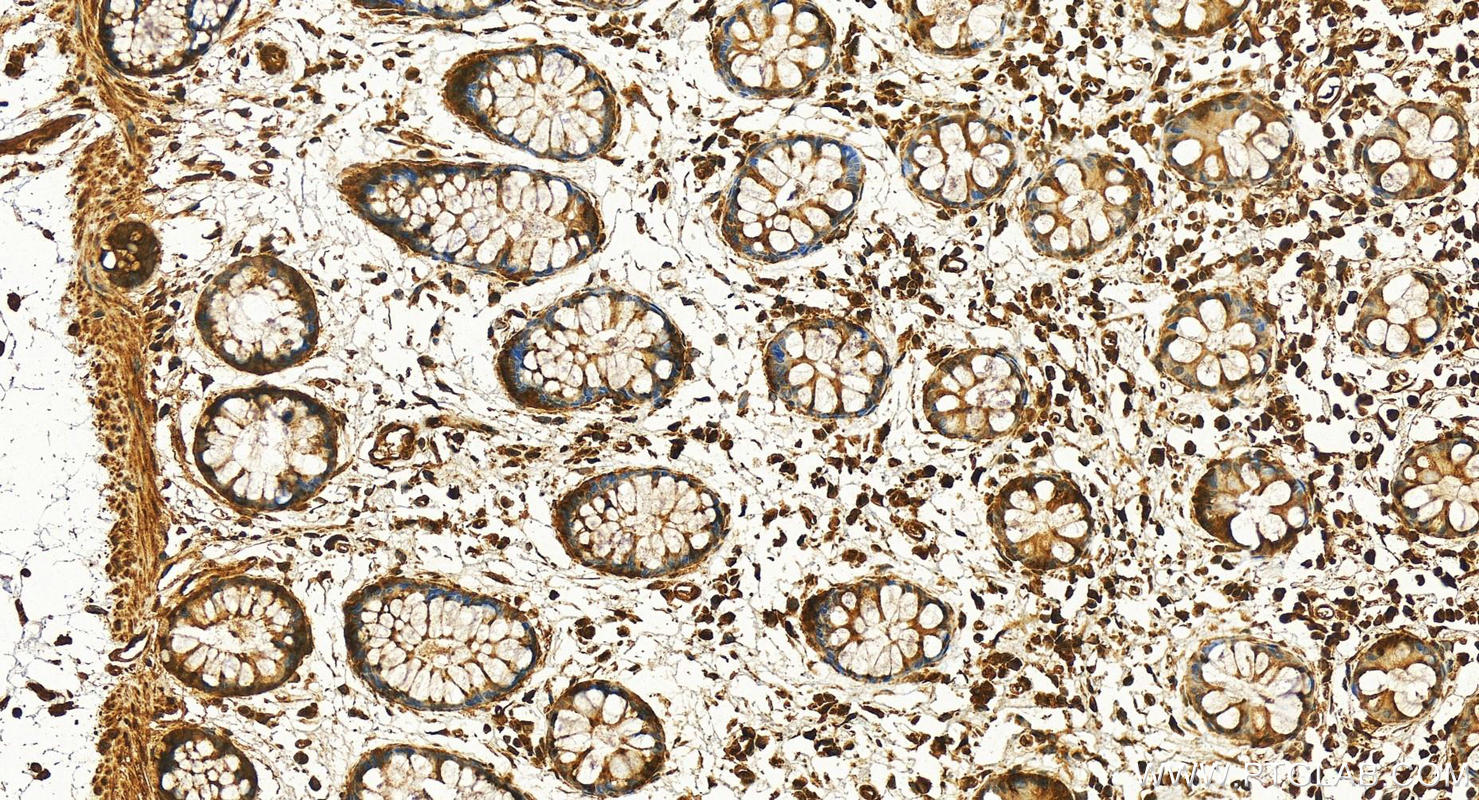OGFOD1 Polyklonaler Antikörper
OGFOD1 Polyklonal Antikörper für WB, IHC, ELISA
Wirt / Isotyp
Kaninchen / IgG
Getestete Reaktivität
human
Anwendung
WB, IHC, ELISA
Konjugation
Unkonjugiert
Kat-Nr. : 30800-1-AP
Synonyme
Geprüfte Anwendungen
| Erfolgreiche Detektion in WB | HeLa-Zellen, DU 145-Zellen |
| Erfolgreiche Detektion in IHC | humanes Kolongewebe Hinweis: Antigendemaskierung mit TE-Puffer pH 9,0 empfohlen. (*) Wahlweise kann die Antigendemaskierung auch mit Citratpuffer pH 6,0 erfolgen. |
Empfohlene Verdünnung
| Anwendung | Verdünnung |
|---|---|
| Western Blot (WB) | WB : 1:1000-1:4000 |
| Immunhistochemie (IHC) | IHC : 1:50-1:500 |
| It is recommended that this reagent should be titrated in each testing system to obtain optimal results. | |
| Sample-dependent, check data in validation data gallery | |
Produktinformation
30800-1-AP bindet in WB, IHC, ELISA OGFOD1 und zeigt Reaktivität mit human
| Getestete Reaktivität | human |
| Wirt / Isotyp | Kaninchen / IgG |
| Klonalität | Polyklonal |
| Typ | Antikörper |
| Immunogen | OGFOD1 fusion protein Ag34034 |
| Vollständiger Name | 2-oxoglutarate and iron-dependent oxygenase domain containing 1 |
| Berechnetes Molekulargewicht | 542 aa, 63 kDa |
| Beobachtetes Molekulargewicht | 75 kDa |
| GenBank-Zugangsnummer | BC032919 |
| Gene symbol | OGFOD1 |
| Gene ID (NCBI) | 55239 |
| Konjugation | Unkonjugiert |
| Form | Liquid |
| Reinigungsmethode | Antigen-Affinitätsreinigung |
| Lagerungspuffer | PBS with 0.02% sodium azide and 50% glycerol |
| Lagerungsbedingungen | Bei -20°C lagern. Nach dem Versand ein Jahr lang stabil Aliquotieren ist bei -20oC Lagerung nicht notwendig. 20ul Größen enthalten 0,1% BSA. |
Hintergrundinformationen
2-oxoglutarate and iron-dependent oxygenase domain-containing protein 1 (OGFOD1) is a proly hydroxylase which belongs to 2-OG-Fe (II) dioxygenase family, it also namely KIAA1612 and TPA1. OGFOD1 is expressed in many tissues, mainly located in the nucleoplasm. It increased in many cancers and regulates both transcription and translation. The apparent molecular weight is larger than the calculated molecular weight of 63 kDa, which is likely due to posttranslational modification, presumably by glycosylation. (PMID:34298635 and 20579638)
Protokolle
| PRODUKTSPEZIFISCHE PROTOKOLLE | |
|---|---|
| WB protocol for OGFOD1 antibody 30800-1-AP | Protokoll herunterladen |
| IHC protocol for OGFOD1 antibody 30800-1-AP | Protokoll herunterladenl |
| STANDARD-PROTOKOLLE | |
|---|---|
| Klicken Sie hier, um unsere Standardprotokolle anzuzeigen |



